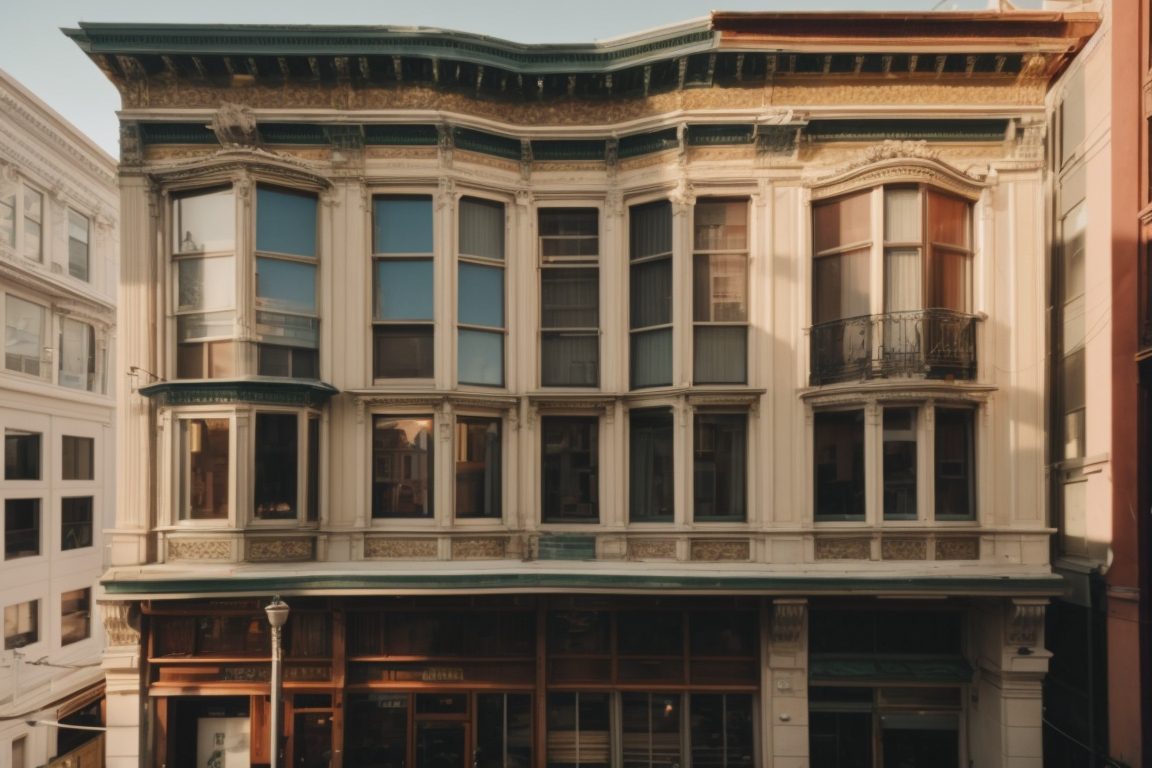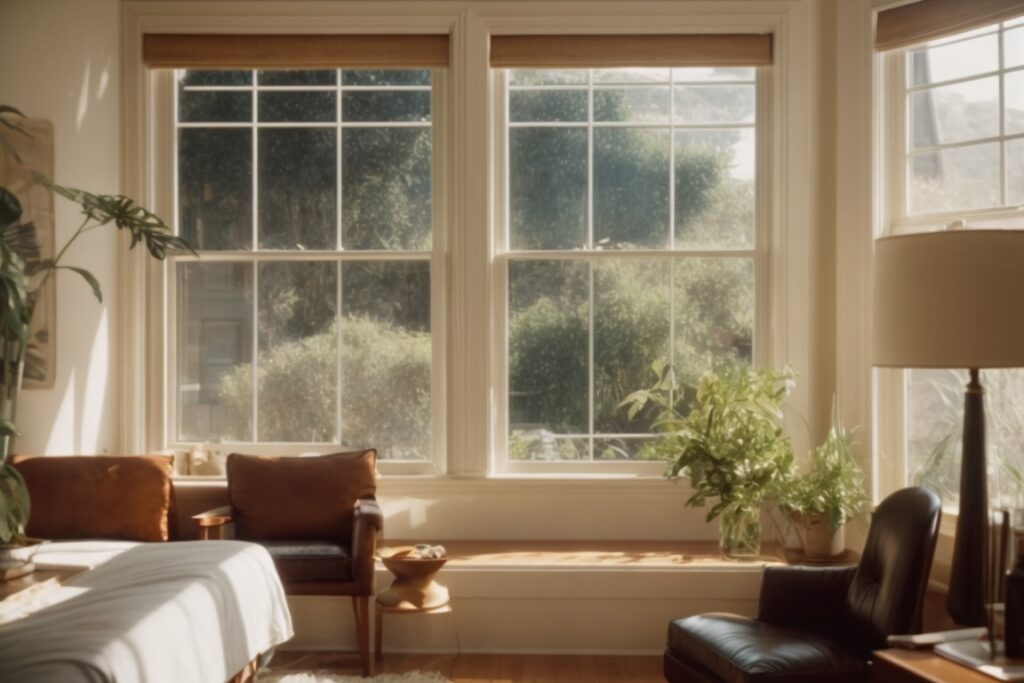How Thermal Window Film in San Francisco Is Changing the Energy Game
In San Francisco, a city known for its unique microclimates and varying temperatures, homeowners and business owners alike are constantly seeking innovative ways to manage their energy consumption. The introduction of thermal window film in San Francisco marks a significant leap forward in this endeavor, providing a simple yet effective solution to a problem many overlook: inefficient windows. Despite its importance, the broader community remains largely unaware of how this technology can revolutionize their energy efficiency efforts.
Windows, often viewed merely as sources of natural light, play a crucial role in a building’s thermal performance. Traditional windows can lead to substantial energy loss, irrespective of the season. In winter, heat escapes through the glass, while in summer, the intense sun can cause indoor temperatures to soar, leading to an overreliance on heating and cooling systems. This not only increases energy bills but also contributes to the larger issue of carbon footprint—a matter of great concern in a city striving for sustainability.
The adoption of thermal window film offers a promising solution to this issue. By enhancing the thermal efficiency of windows, this innovative film reduces the need for artificial heating and cooling, thereby cutting down on energy consumption and associated costs. Yet, its benefits extend beyond just energy savings. With San Francisco’s commitment to environmental stewardship, the widespread use of thermal window film could play a pivotal role in achieving the city’s sustainability goals. Now, the challenge lies in broadening the community’s understanding and acceptance of this technology to usher in a new era of energy efficiency in San Francisco.
Introduction to the Issue: Soaring Energy Costs in San Francisco
In the bustling city of San Francisco, residents are grappling with an increasingly pertinent issue: the soaring costs of energy. This challenge is not only a matter of financial concern but also an environmental one, as the city aims to reduce its carbon footprint and enhance sustainability. With the year-round moderate climate, you might wonder how energy costs can be so high. The answer lies in the efficiency of the homes themselves, particularly the windows.
Traditional windows in many San Francisco homes are not equipped to effectively manage the city’s unique climate, leading to unnecessary heat loss in cooler months and excessive heat gain during the occasional warm spells. This inefficiency forces heating, ventilation, and air conditioning systems to work harder, thereby increasing energy consumption and costs. The primary issue, therefore, centers around finding a solution that can improve window efficiency, thereby trimming the energy costs for San Francisco residents and contributing to the city’s environmental goals.
Shocking Energy Savings with Thermal Window Film in San Francisco
In the bustling city of San Francisco, the addition of thermal window film can lead to eye-opening statistics that might surprise even the most energy-conscious residents. Implementing thermal window film has been shown to reduce energy costs by up to 30% for many San Francisco homes. Considering the city’s unique microclimates, this adjustment has proven indispensable. Furthermore, approximately 50% of a home’s heating and cooling energy is lost through its windows, a startling revelation highlighting the inefficiency of single-pane windows prevalent in older San Francisco buildings. Investing in thermal window film not only enhances home comfort but significantly contributes to environmental conservation efforts in the Bay Area.
Understanding the High Energy Bills in San Francisco
In the bustling city of San Francisco, homeowners and residents face the ever-increasing challenge of managing their energy costs effectively. One significant contributor to inflated energy bills that might not be immediately obvious is the inefficiency of windows without thermal film. The problem with regular windows is their poor insulation properties, leading to excessive heat loss during winter and unwanted heat gain during the summer.
This inefficiency forces heating, ventilation, and air conditioning (HVAC) systems to work harder and consume more energy to maintain comfortable indoor temperatures. In San Francisco’s varied climate, where foggy mornings can turn into warm afternoons, the demand on HVAC systems can be unpredictable and costly. Without the installation of thermal window film, residents often find themselves stuck between the discomfort of an inadequately temperature-controlled home and the high expense of their energy bills.
The implications of this problem extend beyond just financial concerns. Excessive use of HVAC systems due to poor window insulation contributes to higher carbon footprints, going against San Francisco’s strong cultural push for environmental sustainability. In this context, the issue of energy inefficiency becomes not just a pocketbook problem but a social and environmental concern that affects every resident’s quality of life and the city’s ecological goals.
Thus, the lack of thermal window film in San Francisco homes presents a multi-faceted problem. It’s not only about the immediate impact on one’s finances but also the long-term effects on environmental sustainability and personal comfort. Without addressing this issue, residents continue to face the unnecessary challenge of balancing comfort, cost, and conservation.
Understanding the Thermal Efficiency Challenge in San Francisco
In San Francisco, maintaining energy efficiency in homes and buildings is a pressing concern, especially given the unique climate and fluctuating temperatures throughout the year. The problem at hand is not merely about discomfort during colder or warmer periods; it’s about the significant energy costs incurred from trying to maintain a consistent indoor temperature. Traditional windows, without proper thermal insulation, are one of the biggest culprits of energy loss. They let heat escape during the winter and allow excessive heat to enter during the summer, leading to higher energy bills and an increased carbon footprint.
Recognizing the issue is one thing, but understanding the full extent of the problem is another. Many may not realize just how much energy is being wasted through their windows, nor the financial and environmental impact this has over time. This inefficiency challenge is not only about today’s costs but also about the sustainability of our homes and city in the future. Thus, enhancing window efficiency with thermal film in San Francisco emerges as a crucial step towards addressing this problem effectively.
San Francisco Office Reduces Energy Bills with Thermal Window Film
In San Francisco, a local tech startup struggled with climbing energy bills, especially during the summer months. The office, housed in a vintage building with large, single-pane windows, faced significant heat gain, pushing the air conditioning to its limits. The company decided to install thermal window film as a cost-effective solution. Within the first month of installation, they reported a 40% reduction in their energy costs. The building felt noticeably cooler, reducing the strain on their air conditioning system. This real-life example underscores the efficiency of thermal window film in mitigating energy expenses in San Francisco’s unique climate.
Consequences of Ignoring the Problem
Choosing to overlook the installation of thermal window film in San Francisco, especially given the city’s unique climate, can lead to a series of negative outcomes for homeowners. The absence of this energy-efficient solution not only spikes utility bills but can also diminish the comfort and well-being of residents.
First and foremost, energy costs can dramatically increase. Windows without thermal film let out much of the indoor heating during cooler months and allow excessive heat during warmer months, forcing HVAC systems to work overtime. This increased energy usage translates into higher utility bills, straining household budgets unnecessarily.
Moreover, the well-being of those living in the home is at stake. Without the moderating effects of thermal window film, temperatures inside can fluctuate wildly, leading to uncomfortable living conditions. Persistent exposure to strong sun rays can also accelerate the fading of furniture and flooring, detracting from the aesthetic and financial value of the home’s interior.
Ignoring the benefits of thermal window film in San Francisco homes is a decision that can lead to unnecessary financial strain and a decrease in living standards. It’s an oversight that homeowners should thoughtfully reconsider for their comfort and wallet.
Economic Impacts of Avoiding Thermal Window Film in San Francisco
Not installing thermal window film in San Francisco can significantly affect homeowners’ economic security. Without the protective layer that thermal window film provides, windows allow excessive heat loss during cooler months and heat gain during warmer months. This inefficiency forces heating, ventilation, and air conditioning (HVAC) systems to work harder, leading to increased energy consumption and higher utility bills. Over time, the cost of neglecting this energy-saving measure can accumulate, imposing a heavy financial burden on homeowners. Therefore, investing in thermal window film is not just a matter of comfort but a crucial economic decision for San Francisco residents.
Thermal Window Film: A Practical Solution for San Francisco’s Unique Climate Challenges
In the diverse climate of San Francisco, homeowners and commercial property owners alike face the constant challenge of maintaining comfortable indoor temperatures without incurring astronomical energy costs. Thermal window film emerges as a groundbreaking solution to these pervasive problems, promising not only to enhance window efficiency but also to align with the city’s environmental sustainability goals.
Thermal window film acts as an invisible barrier that improves the insulative properties of existing windows, effectively blocking heat gain during San Francisco’s warm, sunny days and retaining warmth during the cooler, foggy periods. This dual-action capability addresses the core issue of thermal inefficiency that many buildings in the city face, without the need for expensive and invasive window replacements.
By installing thermal window film, San Francisco residents can enjoy significant reductions in their energy bills. The film’s ability to moderate temperatures means less reliance on air conditioning units in the summer and heaters in the winter. This decreased energy consumption not only leads to cost savings but also contributes to the broader effort of reducing carbon footprints, a crucial consideration in today’s eco-conscious society.
Moreover, the benefits of thermal window film extend beyond mere energy efficiency and cost savings. It also offers protection against UV rays, reducing the risk of fading in fabrics, furnishings, and floorings. This additional protective layer ensures that the interior of homes and businesses not only stays comfortable but also maintains its aesthetic appeal over time.
Given San Francisco’s unique environmental and climate-related challenges, thermal window film positions itself as not just an option but a necessity for those who seek to optimize their property’s thermal efficiency while contributing to the global initiative of environmental sustainability.
Trimming Energy Costs with Thermal Window Film in San Francisco
In the bustling urban landscapes of San Francisco, thermal window film emerges as a pivotal solution to combat high energy costs and increase the efficiency of residential and commercial buildings. This innovative product is designed to address the significant issue of thermal loss through windows, a common problem that leads to increased energy consumption and higher utility bills.
Thermal window film works by forming a barrier that reflects infrared light and regulates temperature. During the summer months, it reflects the sun’s heat away from your building, preventing excessive warmth from penetrating your space. Conversely, in the cooler months, it helps retain heat within your premises, reducing the need for artificial heating. This dual functionality ensures that irrespective of the season, thermal window film can significantly cut down energy expenses.
Moreover, its application is straightforward, requiring no structural modifications to existing window units. This makes thermal window film a cost-effective and non-invasive approach to enhancing the energy efficiency of buildings in San Francisco. By leveraging this technology, residents and business owners can enjoy a more comfortable interior environment while contributing to the larger goal of sustainable living in the city.
Benefits and Features: Thermal Window Film in San Francisco
Thermal window film presents a game-changing solution for San Francisco residents looking to enhance the efficiency and comfort of their homes. Firstly, this innovative film significantly reduces heat transfer, helping to maintain a consistent indoor temperature all year round. This not only boosts comfort but also leads to substantial energy savings, as the reliance on heating and cooling systems decreases. Additionally, thermal window film blocks harmful UV rays, protecting both the occupants and the interior furnishings from sun damage. Its sleek design fits seamlessly with any aesthetic, ensuring your views are unobstructed while reaping the benefits of improved insulation and UV protection.
Thriving in San Francisco: Real-Life Benefits of Thermal Window Film
In the bustling city of San Francisco, where the fog meets the sun, the impact of thermal window film is not just theoretical—it’s a lived experience for many. Take Sarah, a local homeowner who decided to install thermal window film in her Victorian home. She was pleasantly surprised to find her energy bills falling as her comfort levels rose. “I was skeptical at first,” Sarah admits, “but the difference in temperature regulation is phenomenal. Plus, my energy costs are down by nearly 30%!”
Another testament comes from the Jacksons, a young couple living in a high-rise apartment overlooking the Bay. They were tired of the glaring sun disrupting their weekend mornings. After installing thermal window film, not only did they eliminate the bothersome glare, but they also reduced their cooling needs significantly. “It’s as if we’ve upgraded to a new apartment,” they shared. “The reduction in heat and glare made our place feel instantly more luxurious and comfortable.”
These stories mirror the experiences of countless San Franciscans who’ve turned to thermal window film as a cost-effective, efficient solution to their energy and comfort challenges. Their testimonials highlight a simple truth: investing in thermal window film is not just about saving money—it’s about upgrading your living experience in one of America’s most iconic cities.
Success Story: Enhancing Energy Efficiency in San Francisco with Thermal Window Film
In downtown San Francisco, a local business owner decided to retrofit their office windows with thermal window film to combat the increasing energy bills primarily due to heating and cooling costs. Within months, they noticed a significant reduction in their energy consumption, translating to considerable savings. The thermal film not only improved the building’s energy efficiency but also provided additional UV protection, extending the lifespan of interior furnishings. This success story underscores the effectiveness of thermal window film in San Francisco’s unique climate, offering economic and environmental benefits. Embrace the change today and enhance your property’s efficiency with our top-grade thermal window film. Contact us now to get started!






About The Author: Angus Faith
Angus got his start in the window tinting industry shortly after he moved to San Francisco from his home in Scotland. Almost immediately after moving, he noticed the significant impact that sunlight and weather had on homes and buildings in the area. During his research, he stumbled across window film as a solution for controlling the climate and atmosphere in indoor spaces. Now, Angus has been working in the window tinting industry for over ten years and has installed window film on all types of properties in the San Francisco area, ranging from office buildings, retail stores, and schools to apartments and single family homes. His expertise and product knowledge on the various types of security, energy saving, and decorative window film on the market give him the ability to select the perfect solution for every property based on the unique needs of the building itself as well as the building owner.
More posts by Angus Faith